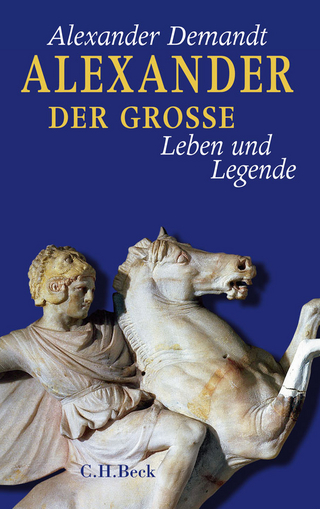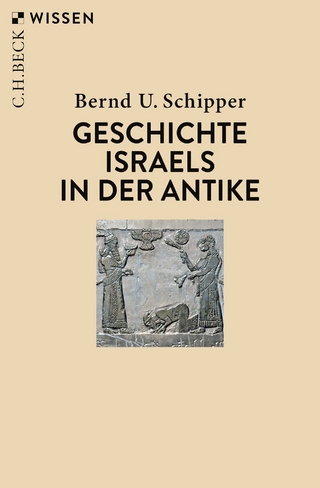
Burials, Migration and Identity in the Ancient Sahara and Beyond
Cambridge University Press (Verlag)
978-1-108-47408-5 (ISBN)
This ground-breaking volume explores a series of inter-related key themes in Saharan archaeology and history. Migration and identity formation can both be approached from the perspective of funerary archaeology, using the combined evidence of burial structures, specific rites and funerary material culture, and integrated methods of skeletal analysis including morphometrics, palaeopathology and isotopes. Burial traditions from various parts of the Sahara are compared and contrasted with those of the Nile Valley, the Maghreb and West Africa. Several chapters deal with the related evidence of human migration derived from linguistic study. The volume presents the state of the field of funerary archaeology in the Sahara and its neighbouring regions and sets the agenda for future research on mobility, migration and identity. It will be a seminal reference point for Mediterranean and African archaeologists, historians and anthropologists as well as archaeologists interested in burial and migration more broadly.
M. C. Gatto is an Honorary Visiting Fellow of the University of Leicester specialising in the prehistoric and historic archaeology of the Nile Valley and the Sahara. D. J. Mattingly is Professor of Roman Archaeology at the University of Leicester. He has worked in the Sahara for almost forty years and is the author of many books and articles related to Saharan archaeology, such as Farming the Desert (2 vols, 1996), which won the James R. Wiseman book award of the American Institute of Archaeology, and The Archaeology of Fazzan series (4 volumes, 2003–13). He was the PI of the European Research Council-funded Trans-Sahara Project (2011–17) which lies behind this volume and is overall series editor of Trans-Saharan Archaeology, in which it is the second of four projected volumes. N. Ray is an archaeologist who specialises in the Roman economy, consumption, and funerary archaeology in North Africa. He is the Assistant Director of the Oxford Roman Economy Project at the University of Oxford and previously worked as a Research Associate on the Trans-Sahara Project at the University of Leicester. He has co-edited several books, including De Africa Romaque (2016). M. Sterry is Assistant Professor in Roman Landscape Archaeology and GIS at the University of Durham. His research on the archaeology of the Sahara and North Africa makes particular use of GIS and remote sensing. He has undertaken fieldwork on various projects in Italy, Britain, Libya, and most recently southern Morocco, where he is co-director of the Middle Draa Project. He has published many articles on the Libyan Fazzan, Saharan trade, urbanization, and oasis settlements.
Preface David J. Mattingly; 1. Burials, migration and identity: the view from the Sahara David J. Mattingly, Maria Carmela Gatto, Martin Sterry and Nick Ray; Part I. Burial Practices in the Central Sahara: 2. Dying to be Garamantian: burial, migration and identity in Fazzan David J. Mattingly, Martin Sterry and Nicholas Ray; 3. Identity markers in the South-Western Fazzan: were the people of the Tanezuft/Tadrart Akakus region Garamantes? Maria Carmela Gatto, Lucia Mori and Andrea Zerboni; 4. Human mobility and identity: variation, diet and migration in relation to the Garamantes of Fazzan Ronika K. Power, Efthymia Nikita, David J. Mattingly, Marta Mirazón Lahr and Tamsin C. O'Connell; 5. The Garamantes from Fewet (Ghat, Fazzan, Libya): a skeletal perspective Francesca Ricci, Mary Anne Tafuri, Francesca Castorina, Fabio Di Vincenzo, Lucia Mori and Giorgio Manzi; Part II. Looking East: 6. Between the Nile and the Sahara: some comparative perspectives David N. Edwards; 7. Isotopic approaches to mobility in Northern Africa: a bioarchaeological examination of Egyptian/Nubian interaction in the Nile Valley Michele R. Buzon, Sarah A. Schrader and Gabriel J. Bowen; Part III. Looking North: 8. Numidian burial practices Joan Sanmartí, Irene Cruz Folch, Jordi Campillo and David Montanero; 9. Revisiting first Millennium BC graves in North-West Morocco Emanuele Papi; Part IV. Looking West: 10. Protohistoric and pre-Islamic funerary archaeology in the Moroccan pre-Sahara Youssef Bokbot; 11. Burial practices in Western Sahara Joanne Clarke and Nick Brooks; Part V. Looking South: 12. Burial and society at Kissi, Burkina Faso Sonja Magnavita; 13. Burial practices, settlement and regional connections around the Southern Lake Chad Basin, 1500 BC–AD 1500 Scott MacEachern; Part VI. Linguistic Aspects of Migration and Identity: 14. The linguistic prehistory of the Sahara Roger Blench; 15. Berber peoples in the Sahara and North Africa: linguistic historical proposals Christopher Ehret; 16. The archaeological and genetic correlates of Amazight linguistics Elizabeth Fentress; 17. Concluding discussion Martin Sterry, David J. Mattingly, Maria Carmela Gatto and Nick Ray.
| Erscheinungsdatum | 05.06.2019 |
|---|---|
| Reihe/Serie | Trans-Saharan Archaeology |
| Zusatzinfo | Worked examples or Exercises; 22 Tables, black and white; 19 Maps; 66 Halftones, black and white; 64 Line drawings, black and white |
| Verlagsort | Cambridge |
| Sprache | englisch |
| Maße | 184 x 256 mm |
| Gewicht | 1330 g |
| Themenwelt | Sachbuch/Ratgeber ► Geschichte / Politik ► Vor- und Frühgeschichte / Antike |
| Geisteswissenschaften ► Archäologie | |
| Geisteswissenschaften ► Geschichte ► Regional- / Ländergeschichte | |
| Sozialwissenschaften ► Soziologie | |
| ISBN-10 | 1-108-47408-X / 110847408X |
| ISBN-13 | 978-1-108-47408-5 / 9781108474085 |
| Zustand | Neuware |
| Haben Sie eine Frage zum Produkt? |
aus dem Bereich


